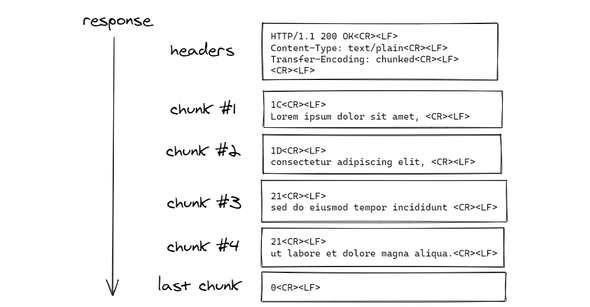RxJS: Understanding fromFetch
May 19, 2020 • 5 minute read

Since version 5, RxJS has included an ajax observable — a framework-independent XHR observable for HTTP requests.
It has always been possible to compose observables using fetch — as promises play nice with RxJS — but the advantage in using ajax was that an HTTP request could be aborted when an observable’s subscriber unsubscribed.
For a long time, it was not possible to abort HTTP requests initiated using fetch. These days, that’s no longer the case, as browser support for aborting fetch-initiated requests is widespread.
To take advantage of this, RxJS has a new API: fromFetch — which was introduced in version 6.5.0.
Some history
Being promise-based, fetch’s support for aborting ongoing requests initially depended upon the TC39 proposal for cancellable promises, but that proposal was withdrawn in 2016.
In 2017, a mechanism for aborting an ongoing fetch was added to the DOM Standard and Jake Archibald covers it in detail in this article:
Our alternative proposal,
AbortController, didn’t require any new syntax, so it didn’t make sense to spec it within TC39. Everything we needed from JavaScript was already there, so we defined the interfaces within the web platform, specifically the DOM standard. Once we’d made that decision, the rest came together relatively quickly.
It took some time for support for this mechanism to become widespread — Safari didn’t implement AbortController until version 12.1, which was released in March 2019.
AbortController
The mechanism for aborting ongoing fetch requests looks like this:
const controller = new AbortController();
const { signal } = controller;
setTimeout(() => controller.abort(), 5e3);
fetch(url, { signal })
.then((response) => response.text())
.then((text) => console.log(text));It uses an AbortController to signal when a fetch request is to be aborted. The signal is passed via the fetch call’s RequestInit parameter and, internally, fetch calls addEventListener on the signal — listening for the the "abort" event.
If the signal emits an "abort" event whilst the request is ongoing, the promise returned by fetch rejects with an AbortError.
In the above snippet, the request will be aborted if it takes longer than five seconds to be fulfilled. If it’s fulfilled within five seconds, calling abort on the controller is ineffectual.
This RxJS equivalent — that uses fromFetch — looks like this:
import { timer } from "rxjs";
import { fromFetch } from "rxjs/fetch";
import { mergeMap, takeUntil } from "rxjs/operators";
fromFetch(url)
.pipe(
mergeMap((response) => response.text()),
takeUntil(timer(5e3))
)
.subscribe((text) => console.log(text));fromFetch accepts the same parameters as fetch and, internally, it creates an AbortController. The controller is wired up to the returned Subscription. When the subscriber unsubscribes, the controller is signaled and, if it’s ongoing, the request is be aborted.
The advantage of using fromFetch isn’t that less code is required — there is a similar amount in each of the above snippets — it’s that the fromFetch is composable.
For example, fromFetch can be used within switchMap, like this:
switchMap((url) =>
fromFetch(url).pipe(mergeMap((response) => response.text()))
)Here, requests will be aborted if the source observable emits another value before said request is fulfilled.
Chunked responses
You might have noticed that there are two promises involved in the fetch example above:
- the promise returned by
fetch; and - the promise returned by the response’s
textmethod.
The reason for this is that the promise returned by fetch resolves as soon as the response’s headers are available, but the promise returned by the response’s text method — or its json method, etc. — does not resolve until the entire response has been received.
In HTTP 1.1, responses can use the chunked transfer encoding:
Chunked encoding is useful when larger amounts of data are sent to the client and the total size of the response may not be known until the request has been fully processed.
Using that encoding, responses are split into chunks — with the first chunk containing the headers, like this:
That means a significant amount of time can elapse between the first and second promises resolvingc.
The AbortController mechanism deals with this by aborting both promises when it signals. That means that if the controller signals after the promise returned by fetch has resolved — and the caller has received a Response — but before the promise returned by the text method has resolved, the text-method-returned promise will reject with an AbortError.
The observable returned by fromFetch emits a Response and it’s emitted as soon as the response’s headers are received. Immediately after the Response is emitted, the observable completes and its subscriber is automatically unsubscribed. And that means the emitted Response could still be ongoing.
To support aborting chunked responses — upon unsubscription — fromFetch accepts a selector via the RequestInit argument, like this:
switchMap((url) =>
fromFetch(url, {
selector: (response) => response.text(),
})
)If a selector is passed, both promises remain controlled by the internal AbortController and if unsubscription occurs after the headers are received, but before the complete body is received, the request will be aborted.
And one last thing: if you are going to use fromFetch in conjunction with switchMap to abort ongoing requests, make sure it’s safe to do that.
